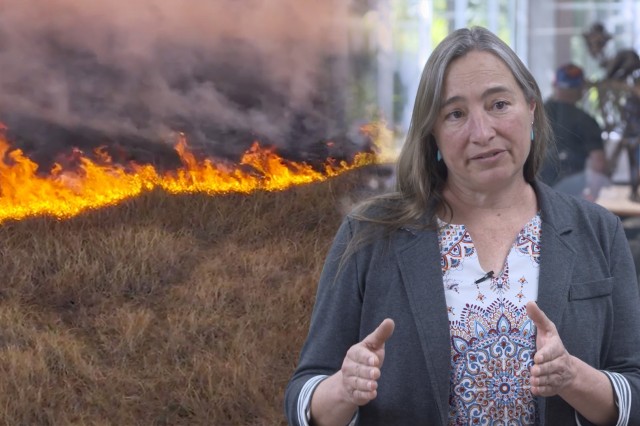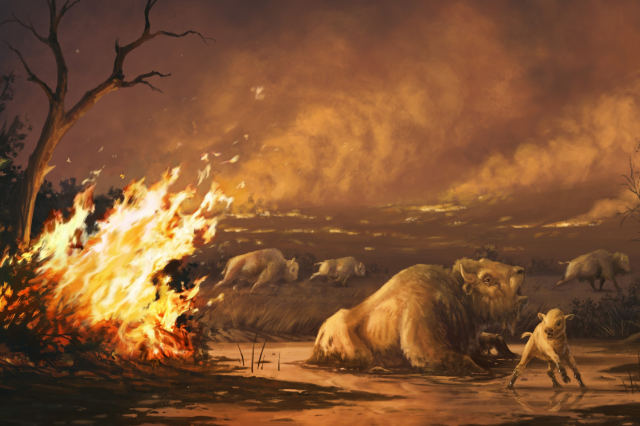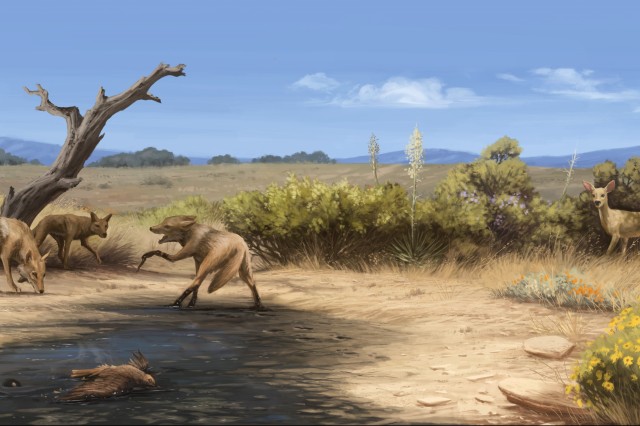Playing With Fire: Extinction and Survival at La Brea Tar Pits
In California, 13,000 years ago, huge Ice Age mammals that had roamed the landscape for many millennia, suddenly ceased to exist. The cause? Humans, catastrophic fires, and an ecosystem made vulnerable by climate change.
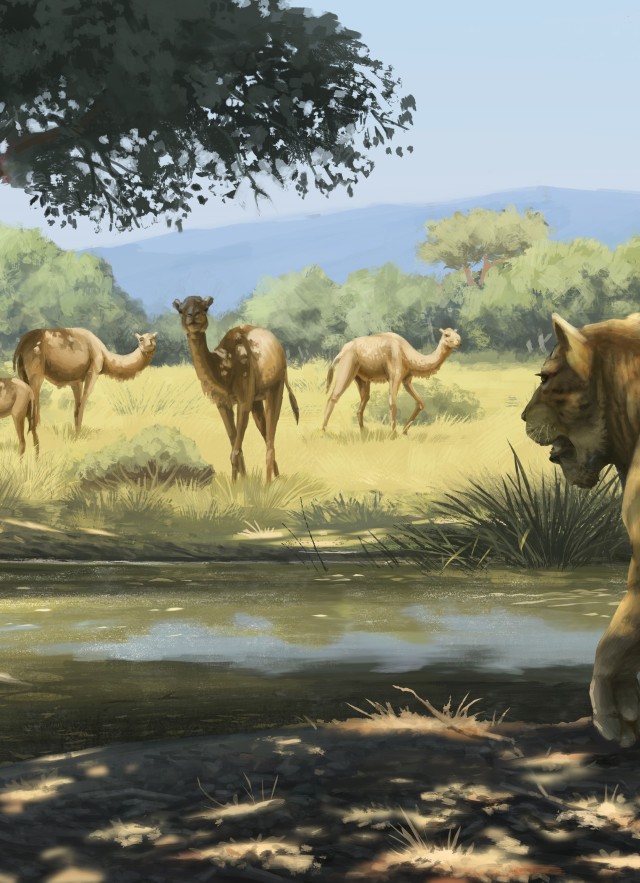
Published August 17, 2023
The findings of a groundbreaking study by La Brea Tar Pits curators—newly published in the prestigious journal Science—are illustrated here in four scenes:
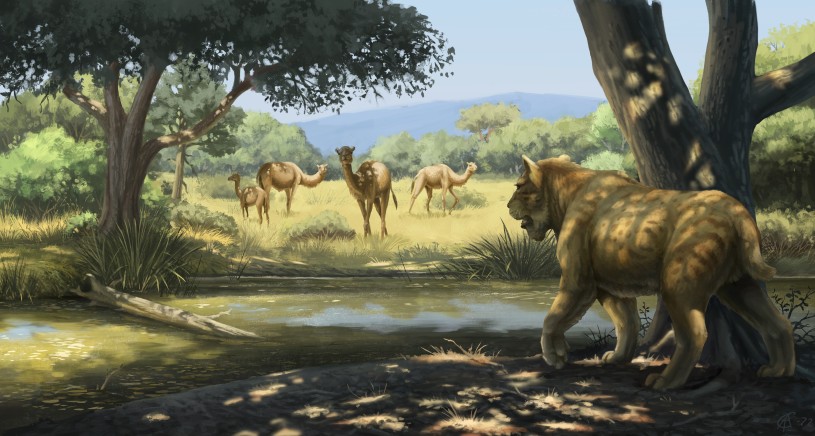
Fifteen thousand years ago, a saber-toothed cat hides in the shade of an oak tree, gazing at a herd of foraging camels. Streams flowed from the mountains through an oak and juniper woodland, covering the asphalt seeps in a thin layer of water. Animals wandered into the shallow pools to take a drink, never to escape.
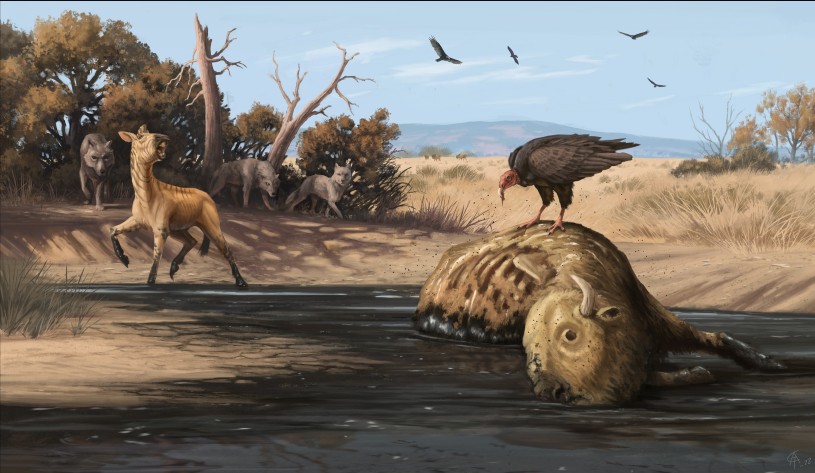
Beginning around 14,700 years ago, the climate began turning warmer and drier. Trees died and herbivores began to disappear, creating an abundance of dry fuels. A hungry pack of dire wolves approach an entrapped bison. Little do they know that their free lunch will soon turn deadly.
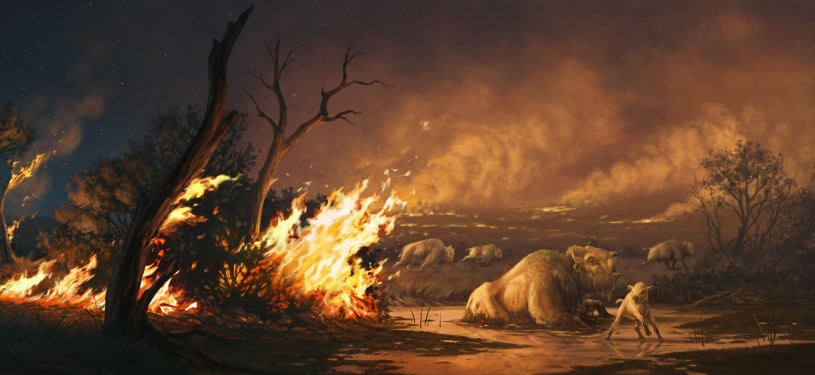
Thirteen thousand two hundred years ago, just as the land was becoming parched from extreme drought, a new force of nature arrived on the scene—humans. With the power to create and control fire, humans lit up the land. Evidence of massive wildfires—abundant charcoal—is found in lake sediments across Southern California.
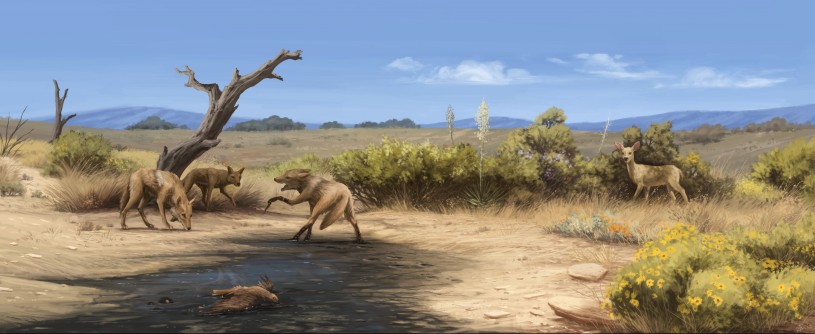
By 12,900 years ago, the Southern California landscape had completely changed. After the conflagrations, the vegetation had switched from juniper woodland to open grassland and the modern, fire-adapted chaparral. Gone also were the great beasts—bison, horses, camels, lions, saber-toothed cats, dire wolves, and giant ground sloths. The largest predators on the landscape were now humans, mountain lions, and coyotes.
Now, researchers at La Brea Tar Pits—the most important Ice Age fossil site on Earth—study this 60,000-year record of environmental change, extinction, and survival in Southern California, helping to inform public policy and conservation efforts as Los Angeles works towards climate resilience and shaping a new future.
